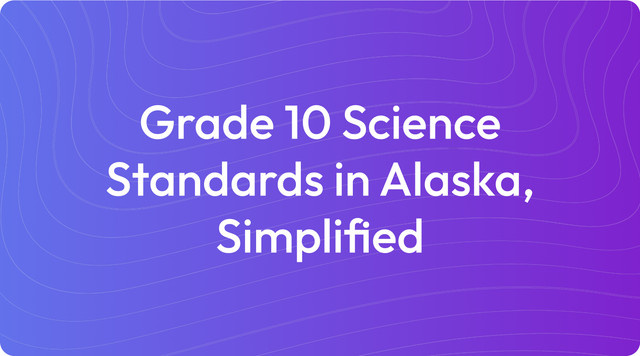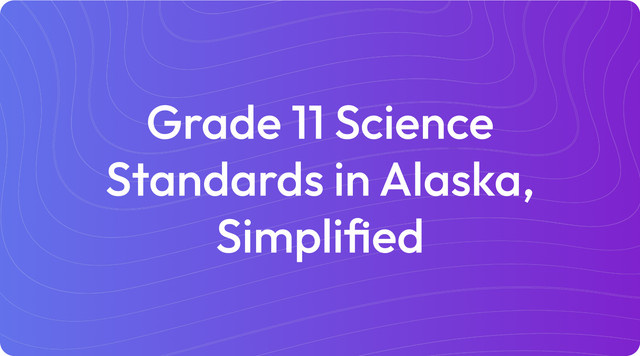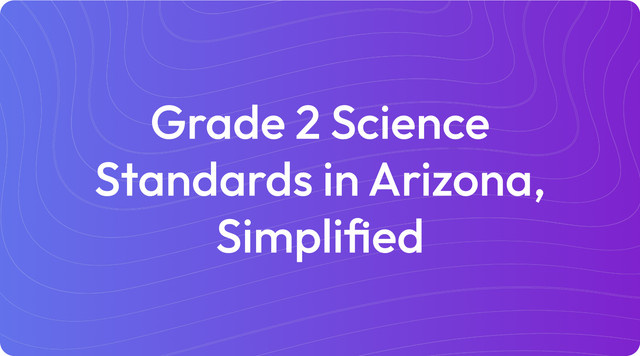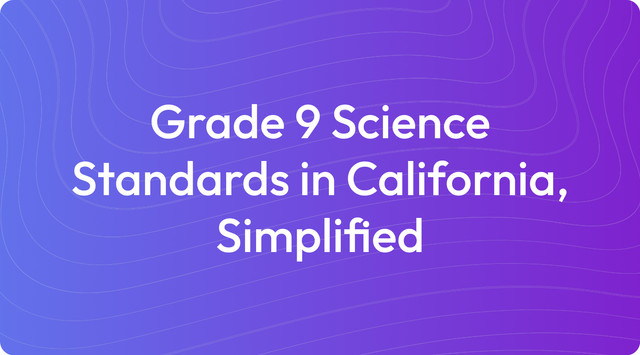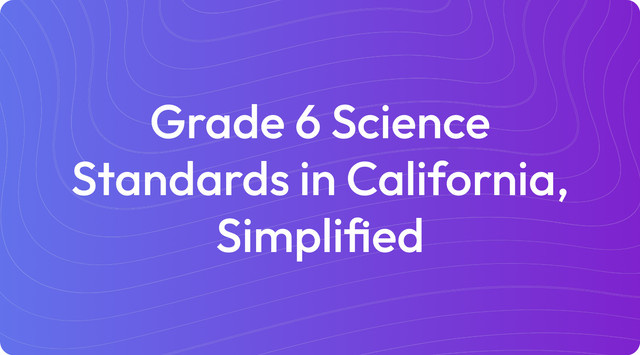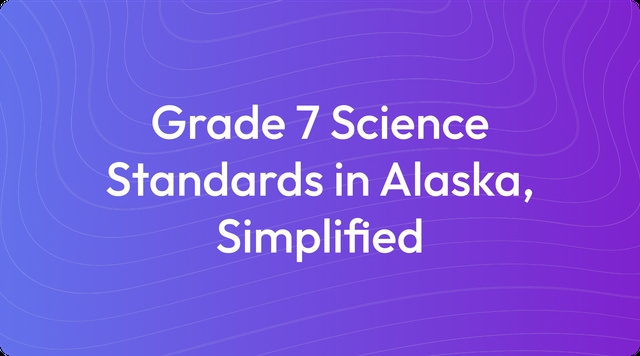Grade 4 Science Standards in California, Simplified
Grade 4 science in California: explore energy, waves, and Earth’s history. Find easy standards—read more on TeachShare!
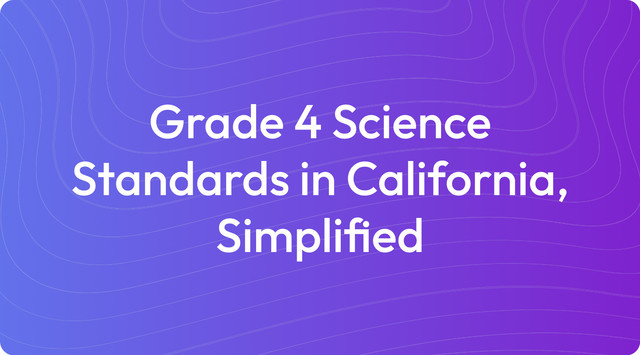
We know that working with state and national standards is a core part of your planning. These frameworks can sometimes seem dense, but they are meant to be a helpful guide for structuring your curriculum. To make this more concrete, we can look at a specific example, like the Grade 4 Science Standards in California, to see how they break down learning goals for your students.
At their core, education standards are learning goals that outline what students should know by the end of a grade. They provide the 'what,' but leave the 'how' of teaching up to your professional judgment. For example, California's fourth-grade science standards might require students to explain the relationship between speed and energy, but you decide on the specific lesson or activity to teach that concept.
What Are Grade 4 Science Standards in California?
The Grade 4 Science Standards in California, based on the California Next Generation Science Standards (CA NGSS), are designed to deepen students' understanding of science concepts through three-dimensional learning. These standards emphasize hands-on exploration, critical thinking, and connections to real-world phenomena. The key areas of focus for Grade 4 are broken down as follows:
1. Physical Science (PS): Energy and Waves
- PS3: Energy
- Key Standard (4-PS3-1): Use evidence to explain the relationship between the speed of an object and the energy of that object.
- Key Standard (4-PS3-2): Make observations to provide evidence that energy can be transferred from place to place (e.g., sound, light, heat, electric current).
- Key Standard (4-PS3-3): Ask questions and predict outcomes about changes in energy when objects collide.
- Key Standard (4-PS3-4): Design and test a device that converts energy from one form to another (e.g., a windmill or solar panel).
- PS4: Waves and Their Applications
- Key Standard (4-PS4-1): Develop a model to describe how waves carry energy (e.g., sound waves, light waves).
- Key Standard (4-PS4-3): Design a solution to use light or sound to communicate over a distance (e.g., using mirrors, flashlights, or drums).
2. Life Science (LS): Structures and Functions
- LS1: From Molecules to Organisms
- Key Standard (4-LS1-1): Use evidence to explain how animals and plants have internal and external structures that function to support survival, growth, behavior, and reproduction.
- Key Standard (4-LS1-2): Use models to describe how animals use their senses to process information for survival.
3. Earth and Space Science (ESS): Earth’s Systems
- ESS1: Earth’s Place in the Universe
- Key Standard (4-ESS1-1): Use evidence from patterns in rock formations and fossils to explain changes in a landscape over time.
- ESS2: Earth’s Systems
- Key Standard (4-ESS2-1): Make observations to provide evidence of the effects of weathering or the rate of erosion by water, ice, wind, or vegetation.
- Key Standard (4-ESS2-2): Analyze and interpret data from maps to describe patterns of Earth’s features (e.g., mountains, rivers, volcanoes).
- ESS3: Earth and Human Activity
- Key Standard (4-ESS3-1): Obtain and combine information to describe how natural resources are used to meet human needs.
4. Engineering, Technology, and Applications of Science (ETS): Problem Solving
- ETS1: Engineering Design
- Key Standard (3-5-ETS1-1): Define a simple design problem reflecting a need or want that can be solved through engineering.
- Key Standard (3-5-ETS1-2): Generate and compare solutions to a problem based on criteria and constraints.
Key Crosscutting Concepts (CCCs) for Grade 4 Science
- Energy and Matter: Understanding how energy is transferred and converted in systems
- Cause and Effect: Exploring how changes in systems (e.g., erosion, collisions) have predictable effects
- Patterns: Observing patterns in waves, fossils, and landscapes to identify relationships and changes over time
- Systems and Models: Using models to explore systems like ecosystems, energy transfer, or Earth’s features
The framework for these standards is guided by the Sources.
Key Tested Standards
The Grade 4 Science Standards in California, based on the CA NGSS, emphasize foundational concepts in Physical Science, Life Science, Earth and Space Science, and Engineering. These key tested standards are designed to build critical thinking, hands-on investigation skills, and an understanding of real-world problem-solving. Here are the key tested standards you can expect:
1. Physical Science (PS): Energy and Waves
- 4-PS3-1: Energy and Speed: Use evidence to describe the connection between an object's speed and its energy.
- 4-PS3-2: Energy Transfer: Observe and show proof that energy can move from one location to another through sound, light, heat, or electric currents.
- 4-PS3-3: Energy in Collisions: Formulate questions and make predictions about how energy changes during collisions.
- 4-PS3-4: Energy Conversion: Create and evaluate a device that changes energy from one form to another.
- 4-PS4-1: Waves Carry Energy: Build a model that illustrates how waves transport energy.
- 4-PS4-3: Communication with Light or Sound: Create a method for long-distance communication using light or sound.
2. Life Science (LS): Structures and Functions
- 4-LS1-1: Animal and Plant Structures: Explain with evidence how the internal and external structures of plants and animals help them survive, grow, behave, and reproduce.
- 4-LS1-2: Processing Information: Use a model to show how animals use their senses to interpret information and survive.
3. Earth and Space Science (ESS): Earth’s Systems and Changes
- 4-ESS1-1: Rocks, Fossils, and Landscape Changes: Apply evidence from rock and fossil patterns to explain how a landscape has changed over time.
- 4-ESS2-1: Weathering and Erosion: Observe and gather evidence on the impact of weathering or the speed of erosion from elements like water, ice, wind, or plants.
- 4-ESS2-2: Earth Features: Examine and understand map data to identify patterns in Earth's features, such as mountains, valleys, and volcanoes.
- 4-ESS3-1: Natural Resources: Gather and synthesize information to explain how people use natural resources.
4. Engineering, Technology, and Applications of Science (ETS): Problem-Solving
- 3-5-ETS1-1: Defining Problems: Identify a straightforward design problem based on a need or want that engineering can solve, including criteria for success and constraints.
- 3-5-ETS1-2: Evaluating Solutions: Develop and contrast multiple solutions to a problem, considering specific criteria and limitations.
Key Crosscutting Concepts (CCCs)
- Energy and Matter: How energy is transferred and converted in systems
- Cause and Effect: Exploring how collisions and environmental changes have predictable outcomes
- Patterns: Recognizing patterns in waves, rock formations, and animal behavior
- Systems and Models: Investigating systems like ecosystems, energy transfer, or Earth’s features
Why These Standards Are Key for Testing
Students are assessed on:
- Hands-On Investigations: Experiments to test energy transfer, erosion, and plant structures
- Modeling: Creating models of waves, energy systems, or animal senses
- Data Analysis: Recording and interpreting data from observations or maps
- Explanation and Argumentation: Using evidence to explain phenomena, like how collisions affect energy or how weathering changes landscapes
This information is compiled from guidance provided by the Next Generation Science Standards and the California Department of Education.
Example Learning Objectives for Unit Planning
Learning objectives translate broad standards into clear, measurable goals for your students. They act as a roadmap for your lessons, defining exactly what students should be able to do by the end of a unit. To see this in action, here are some sample learning objectives for two Grade 4 Science standards, written in student-friendly 'I can' statements to make the goals clear and accessible.
Standard: 4-PS3-2
(Make observations to provide evidence that energy can be transferred from place to place by sound, light, heat, or electric currents.)
Learning Objectives:
- I can explain how energy moves from one place to another using sound, light, heat, or electricity.
- I can conduct experiments to observe how sound travels through different materials, like air, water, and solids.
- I can describe how light transfers energy, such as when sunlight warms the ground or plants.
- I can record my observations and use evidence to explain how energy is transferred in different systems.
Standard: 4-ESS2-1
(Make observations to provide evidence of the effects of weathering or the rate of erosion by water, ice, wind, or vegetation.)
Learning Objectives:
- I can describe how weathering and erosion change the shape of the land over time.
- I can conduct experiments to observe how water, wind, and ice cause erosion on soil or sand.
- I can explain how plants and vegetation can slow down erosion.
- I can use my observations to provide evidence of how weathering and erosion affect Earth’s surface.
Key Changes & Updates
The Grade 4 Science Standards in California were updated with the adoption of the California Next Generation Science Standards (CA NGSS) in 2013. This update marked a significant move away from simple memorization. The focus is now on “three-dimensional learning,” a framework that helps you integrate what students do (Science and Engineering Practices), how they think (Crosscutting Concepts), and what they know (Disciplinary Core Ideas). It’s about guiding students to think and act like scientists and engineers.
In practice, this means your lessons will be more connected to real-world examples that students can observe and question. There's a greater emphasis on hands-on investigations, where students don't just learn facts but discover them. You'll also see the integration of engineering design, which encourages students to build, test, and find solutions to problems. The goal is to help students develop critical thinking skills by asking them to use evidence from their own observations to explain their reasoning.
Create with TeachShare
We know that translating these standards into effective classroom materials is a significant task. Our platform is built to support you by making it simple to produce high-quality, differentiated resources aligned with specific learning goals, freeing you up to focus on what you do best: teaching. Start creating standards-aligned instructional resources with TeachShare now.
Frequently Asked Questions
What key science concepts will my fourth graders learn?
Fourth-grade science introduces students to foundational concepts across several disciplines. Here are the main areas of focus:
- Physical Science: Exploring how energy is transferred through sound, light, heat, and collisions
- Life Science: Understanding the internal and external structures that help plants and animals survive and grow
- Earth Science: Investigating how natural processes like weathering and erosion change Earth’s surface over time
- Engineering: Applying scientific knowledge to design and test solutions for real-world problems
How do the NGSS-based standards change the way science is taught?
The newer standards represent a significant shift from rote memorization to active investigation. The focus is on:
- Three-Dimensional Learning: This approach weaves together science practices, core ideas, and crosscutting concepts.
- Hands-On Investigation: Students are encouraged to experiment and explore phenomena directly.
- Real-World Connections: Lessons are tied to everyday experiences to show students the relevance of science.
- Engineering Design: Problem-solving and design are integrated into the curriculum to build practical skills.
How can I help students see the real-world relevance of these science topics?
The standards are designed to make science tangible and relevant. You can connect learning to students' lives by:
- Exploring how energy works in familiar contexts, like sunlight warming a surface or sound traveling through a wall
- Investigating local examples of how erosion and weathering shape the landscape in your community
- Challenging students to design solutions to problems they can relate to, such as creating a device to communicate with light
What is the role of engineering in the fourth-grade science curriculum?
Including engineering in the science curriculum helps students move from learning about concepts to applying them. It teaches them to:
- Use scientific principles to solve practical problems
- Develop creativity and critical thinking skills by designing, testing, and refining solutions
- Understand the connection between science and potential STEM careers
What does assessment look like for these new standards?
Assessment moves beyond traditional tests and quizzes. Instead, student understanding is measured through a variety of performance-based tasks, such as:
- Hands-on investigations: Observing students as they conduct experiments on energy, erosion, or waves
- Models: Asking students to build and explain models of animal structures or energy systems
- Data analysis: Evaluating how students collect, interpret, and draw conclusions from data
- Evidence-based explanations: Assessing students' ability to explain scientific phenomena using evidence they have gathered
Answer


